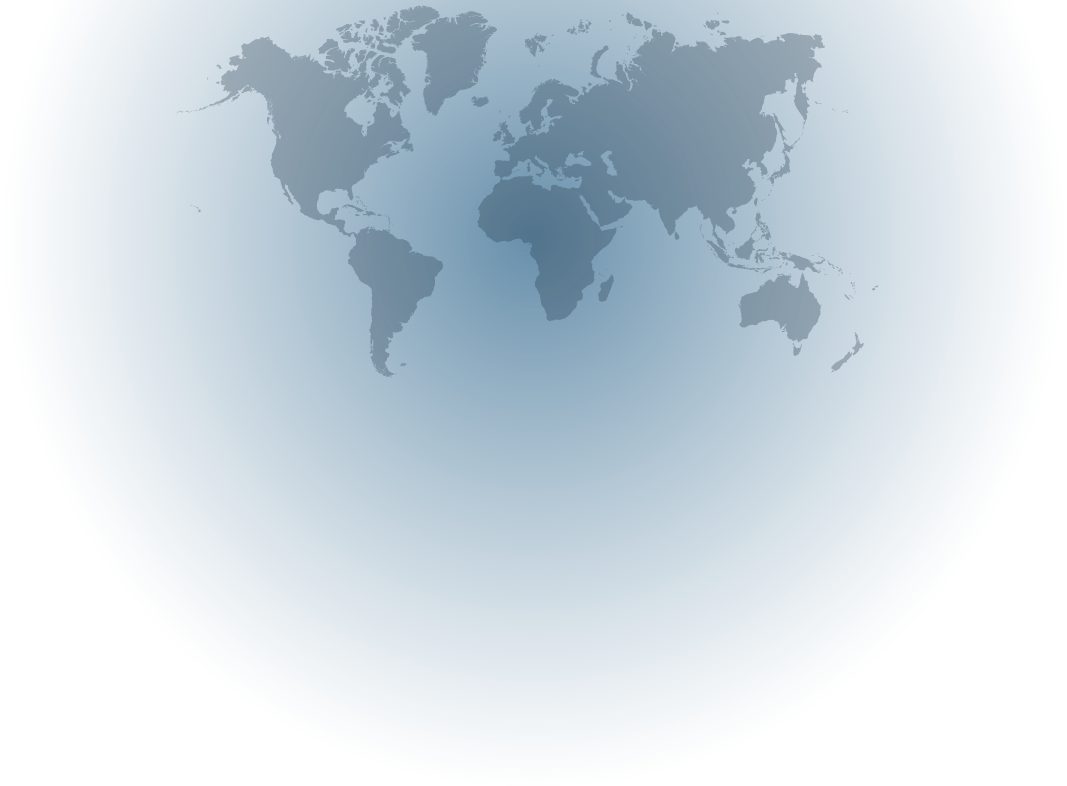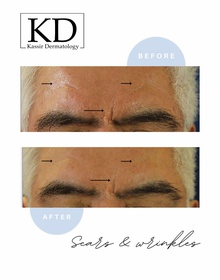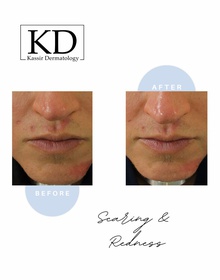
SCARS

Scarring occurs when the deep layer of the skin, the dermis, is damaged or the wound healing process is interrupted. This can develop following many types of injuries to the skin including burns, cuts, surgery, and also as a result of diseases such as acne.
Request More Info About
SCARS
SCARS IN DEPTH
by Martin Kassir, M.D., F.A.A.D.
Are they all the same?
No, there are many different kinds. Scars can appear flat and pale, or they can be raised, pitted, sunken or contracted. Raised scars are called hypertrophic scars or keloid scars. They occur when the body produces too much collagen during healing, causing hypertrophic scars to be raised above the surrounding skin. Sunken or pitted scars are more common after surgeries and diseases such as acne or chickenpox. Contracture scars are more common after burns. Regardless of the cause, while some will naturally become less noticeable over time, they do not improve significantly unless treated.
Can anything be done about them?
At Kassir Dermatology, we can safely and effectively treat traumatic scars and stretch marks. Dr. Kassir will help restore your confidence by using lasers to gently reduce the appearance over a series of treatments.
Contact us to schedule your consultation and find the best treatment method for you.
Scars Before & After Gallery
Click here to see the scars gallery
aSKINg the EXPERT: Scars
What is the best treatment for acne scars?
Acne scars require a thorough evaluation by a dermatologist. Acne is attributed to multiple factors: the origin of acne in each patient and the subsequent wound healing process determine the nature of the scar and therefore the treatment. A variety of acne scars can exist, even in the same patient; therefore, usually multiple treatment modalities are required. Treating the active acne (if any), managing the inflammation, and then treatment of the actual scar are required. Topical therapy, minor procedures, lasers, and surgery are just some of the treatment modalities used to treat acne scars.
Does the location of the scar play any role in the severity of the scar?
The location of a scar can definitely play a key role in the appearance and severity of the scar. Scars in areas of high tension, such as the chest, shoulders, and back may appear thicker and more pronounced.
What factors could influence scar formation?
Genetic factors and the capacity to respond to trauma are the main factors influencing scar formation.
What are some possible treatments for atrophic scars?
Atrophic (depressed/sunken) Scars may be treated in a variety of ways.
Chemical Peels, dermabrasion, microdermabrasion, punch techniques, tissue augmenting agents, microneedling, lasers, and combination therapy have all been used for the treatment of atrophic scars.
What are the costs for scar treatments?
The cost depends on what treatment is recommended. All scars are different and occur on different parts of the body.
Does it matter how old the scar is?
The length of time a scar has been present can play a role in the possibility of improvement in the scar. However, this is just one factor in evaluating a scar before recommending a treatment course.
Kassir Dermatology © 2025












